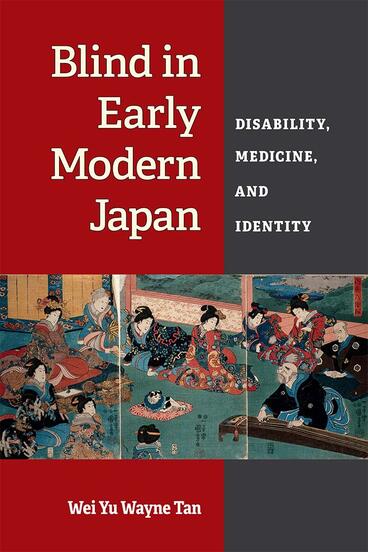Blind in Early Modern Japan
Disability, Medicine, and Identity
A history of the blind in Japan that challenges contemporary notions of disability
Description
While the loss of sight—whether in early modern Japan or now—may be understood as a disability, blind people in the Tokugawa period (1600–1868) could thrive because of disability. The blind of the era were prominent across a wide range of professions, and through a strong guild structure were able to exert contractual monopolies over certain trades. Blind in Early Modern Japan illustrates the breadth and depth of those occupations, the power and respect that accrued to the guild members, and the lasting legacy of the Tokugawa guilds into the current moment.
The book illustrates why disability must be assessed within a particular society’s social, political, and medical context, and also the importance of bringing medical history into conversation with cultural history. A Euro-American-centric disability studies perspective that focuses on disability and oppression, the author contends, risks overlooking the unique situation in a non-Western society like Japan in which disability was constructed to enhance blind people’s power. He explores what it meant to be blind in Japan at that time, and what it says about current frameworks for understanding disability.
Wei Yu Wayne Tan is Associate Professor of History at Hope College.
Reviews
"Ably and admirably striding several disciplinary boundaries, Tan's book is an empirically rich and straightforward account of blindness during the Edo period. More than simply presenting Tokugawa Japan as a case study in the larger corpus of the history of disability, it encourages scholars to reconsider approaches to writing about blindness and visual impairment."
- Kerry Shannon, Social History of Medicine
"The book will reward a variety of readers, from those looking to understand general aspects of how Tokugawa society functioned, to those seeking information on blindness and blind people in Japanese history, to those interested in non-Western histories and views on disability, and many more."
- Frank Mondelli, Journal of the History of Medicine and Allied Sciences
Winner of the 2023 Patricia Buckley Ebrey Prize in East Asian History prior to 1800
- American Historical Association
"A thoughtful, deeply researched contribution to disability studies."
- Kirkus Reviews
Winner of the 2023 Outstanding Book Award
- Disability History Association
“One of the most significant new works in Japan disability studies in the past ten years . . . this history of the feudal guild structure of the blind in Tokugawa Japan has the potential to up-end how we think about blindness.”
- Karen Nakamura, University of California, Berkeley
"...Tan’s book is an excellent opening for the history of blindness in Japan during its early modern period. Its theoretical frameworks, the power of lineages, and the background of consumer culture are excellent jumping-off points for historians of Japanese disabilities and non-European scholars who might follow."
- Isis (A Journal of the History of Science Society)
"Highly recommended."
- CHOICE
"The book is written in an engaging manner and is wonderfully illustrated with contemporary paintings, prints and photographs. . . . this is a book I will certainly revisit and recommend to anyone with an interest in the history of disability and Japanese society or the ways in which disability studies approaches have the potential to shed new light on experiences of disability beyond the global North and the present day."
- LSE Review of Books
Winner of the Honorable Mention for the President's Book Award
- Social Science History Association
"Tan takes care to describe and transcribe the images in the captions below them, a necessary and very welcome accessibility feature...The focus on electronic resources especially adds to the accessibility of Tan's research and its utility to anyone who wants a deeper look at Tokugawa medical and social practices around blindness."
- Canadian Journal of Disability Studies
--Canadian Journal of Disability Studies
News, Reviews, Interviews
Listen: Interview with New Books Network | 11/30/2022
Read: Review in Kirkus | 06/06/2022
Read: Review in Isis (subscription required) | 03/01/2023
Read: Review in Choice | 07/10/2023
Read: Review in LSE Review of Books | 07/13/2023
Read: Review in Social History of Medicine (subscription required) | 07/18/2023
Winner: 2023 Outstanding Book Award from the Disability History Association (DHA) | 10/23/2023
Winner: 2023 Patricia Buckley Ebrey Prize from the American Historical Association (AHA) | 10/23/2023
Winner: Honorable Mention for the President's Book Award from the Social Science History Association (SSHA) | 11/20/2023

